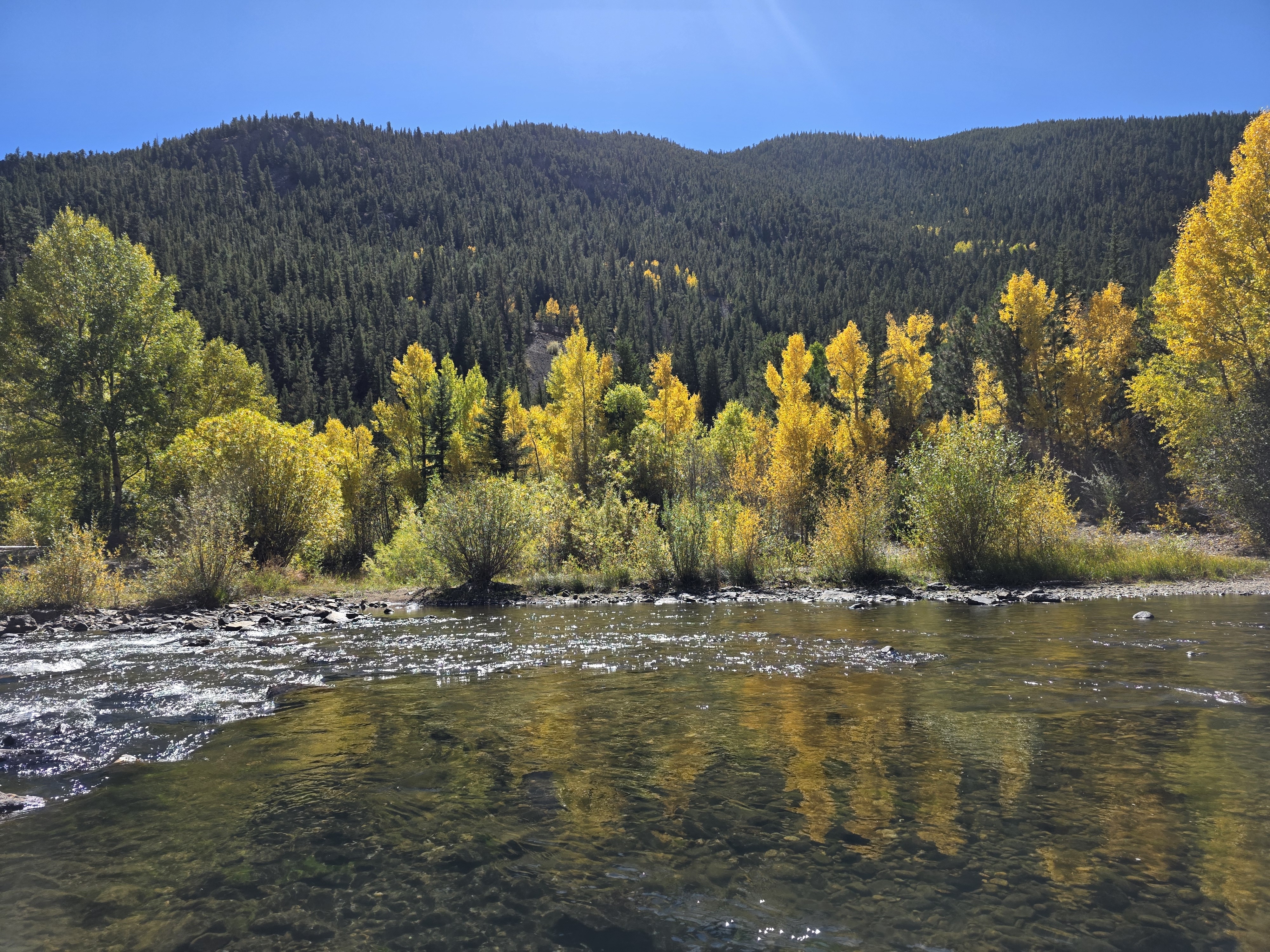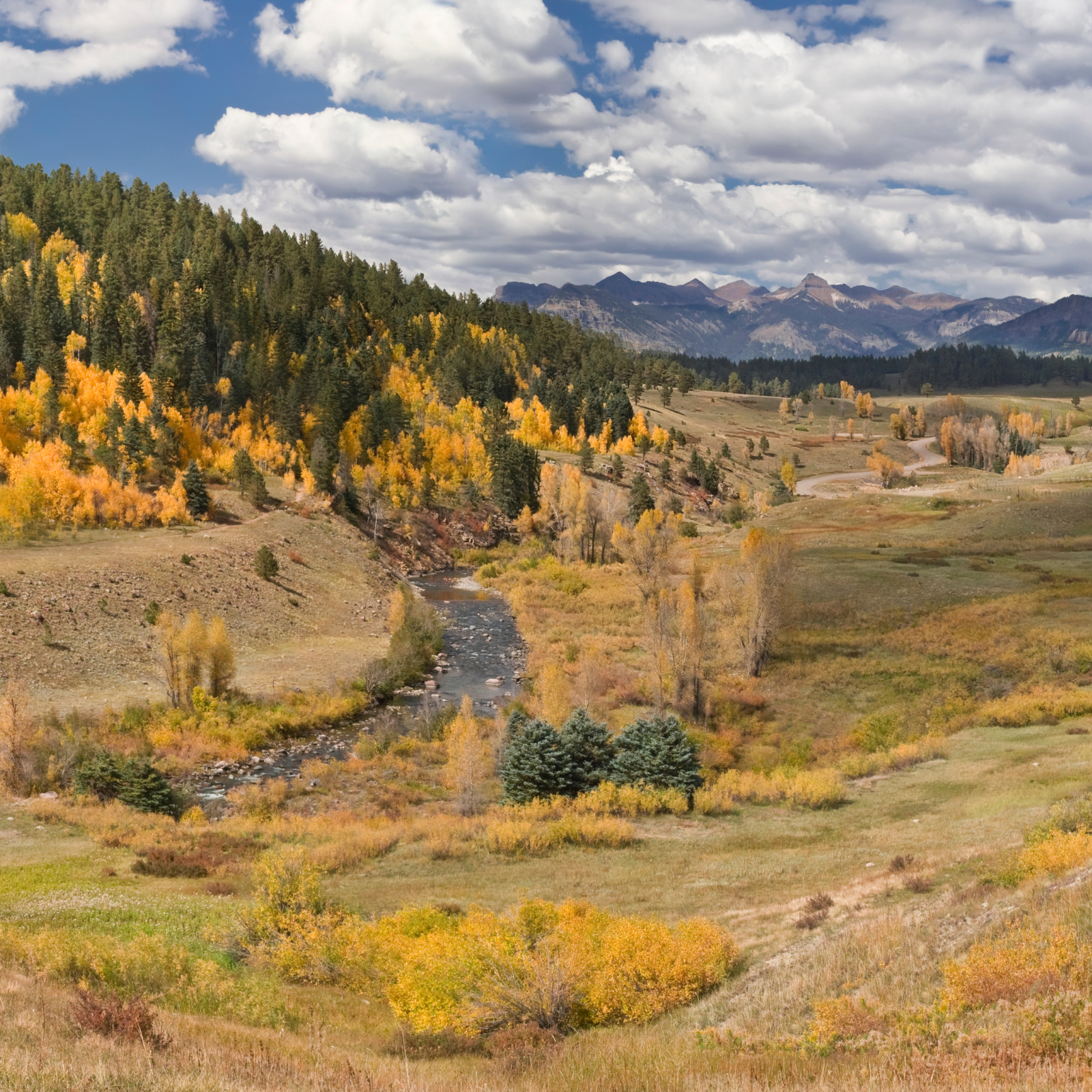Fall on the Deckers section of the South Platte brings a narrowing of effective bugs, spookier trout, and a need for precision. The right rig can mean the difference between a blank day and a stringer. Below are three rigs that consistently shine this time of year — with notes on when and where they perform best.

Listen to the Podcast!
1. Emerger / Baetis Nymph Rig (Double-Rig)
Why it works:
Fall trout are often keying on baetis emergers or nymphs in the mid-column rather than full surface dries. The water is cooling, insect activity is selective, and fish are less inclined to chase big dries. The emerger rig gives you presence in that sweet zone.
Typical Setup:
- Lead fly: Baetis emerger (e.g. Barr’s BWO Emerger, Foam Wing Emerger) in size #20–22
- Trailer/dropper: A midge or small soft-hackle emerger in #22–24 or a slim RS2
- Split shot or light tungsten on the leader (above flies) to get flies down to feeding depth
- Long leader to minimize drag (6X or finer downstream of tippet junction)
- Depth varied depending on current; often 6–18 inches off bottom or mid-column depending on flow & clarity
When to use it:
- Midday, especially under cloud cover
- When dries aren’t producing but you see rises (emergers) or subtle takes
- On stretches with moderate current, deeper runs, seams
Tactical tip:
Be ready to adjust depth dynamically. Start shallow; if you get no takes, lengthen tippet between your weight and flies or move the flies deeper. Mending is critical to keep both flies in a natural drift.
2. Tiny Midge Indicator / Micro Rig
Why it works:
In late fall, midges often dominate the bug menu. When baetis activity slows, fish default to what’s still reliable — midges. A midge-specific rig lets you fish subtle, low-volume patterns that trout trust late in the season.
Typical Setup:
- Indicator (light, low-visibility): small foam or yarn indicator
- Dropper: Zebra Midge, Top Secret Midge, or Mercury Midge in sizes #22–24
- Sometimes use a second dropper below (like a thinner midge emerger) in heavier water
- Minimal or no weight; sometimes micro shot or a fine tungsten bead
- Short leader segments to maintain sensitivity
When to use it:
- Mornings, evenings, or any time baetis or dries are weak
- Slow seams, slack water, undercut banks, or tails of runs
- On ultra-clear water where heavier rigs are spooking fish
Tactical tip:
Watch the indicator like a hawk — takes can be subtle. Give the rig time; often the strike comes after a pause rather than at initial movement.
3. Small Streamer / Micro-Leech Swing Rig
Why it works:
Late fall can trigger opportunistic aggression from trout preparing for spawn. Small streamers or leech-style flies fished tight to structure or in deeper seams can provoke reactive strikes when other presentations are failing.
Typical Setup:
- Single streamer or micro-leech (e.g. Mini Dungeon, Thin Mint Bugger) in #8–12
- Use light (4X–5X) tippet to allow turning over the fly
- No indicator (or a small bobber if you like), fish by sight or feel
- Swinged across current seams, or stripped just under the surface near edges
When to use it:
- Late afternoon, dusk, or on overcast days
- When water warms during the day and fish are more willing to chase
- Around structure, wood, undercut banks, deeper pools
Tactical tip:
Use short, sharp strips or swings — don’t let the fly hover too long. Present it near cover and be ready to set quickly on a pull.
Download the South Platte Hatch Chart
Comparing the Rigs
| Rig | Best Time / Conditions | Strength | Weakness / Risk |
|---|---|---|---|
| Emerger / Baetis Nymph | Midday, cloudy conditions | Covers the hatch, good mid-column presence | Risk of drag, needs depth control |
| Midge Indicator | Quiet windows, ultra-clear periods | Very subtle, trusted late | Takes are faint — you can miss many |
| Streamer / Micro-Leech | Dusk, aggressive windows | Can trigger strikes when others don’t | Requires bold fish; may spook fish if not stealthy |
Final Thoughts & Tips
- Read the river: If you see surface activity but dries fail, shift quickly to emerger rigs.
- Depth dance: Small changes in dead drift depth can spell the difference. Start shallow and go deeper.
- Switch early: Don’t persist with one rig too long — rotate among the three.
- Leader discipline: Use soft leaders and fine tippets — especially on clear water.
- Stay light-footed: In pressured water, your shadow or splash kills your shot quicker than the wrong fly.
.png?width=300&height=100&name=Copy%20of%20Rise%20Beyond%20Logo%2012.31.24%20(300%20x%20100%20px).png)
.png)

.jpg)
